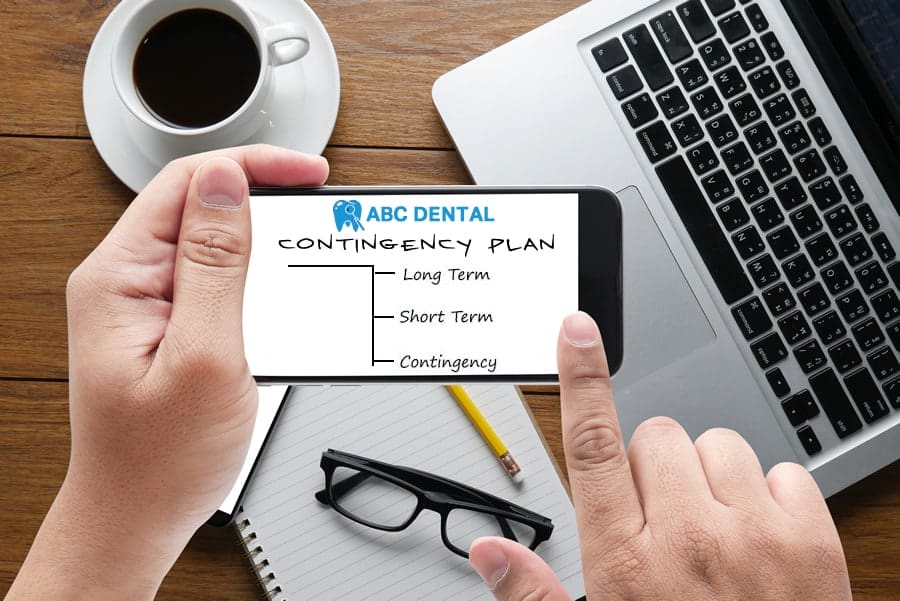
16 Jun Do you have a practice contingency plan?
By Tabitha Jaquay Fernandez
It’s never the call we want to receive. A dentist client has been diagnosed with terminal cancer. This can be a tough, impactful situation on many levels. How can you reassure your family, team and patients that everything is going to be OK? What do you communicate to your patient base to retain them?
These are the times when I’m so glad to have a close relationship not only with the doctor, spouse, and practice team, but also my own team who can rally support. Each time this happens, I want to initiate giant billboards across the nation asking dentists: Do you have a dental practice contingency plan?
There is much to do in these situations. I want to make the doctor, doctor’s family, and dental team aware of the importance of a practice contingency plan. To drive my point home, I’ll share one particular doctor’s story with you.
After just three weeks of a doctor being absent, the practice is most likely losing existing patients. This depends on the size of the town the practice is in and the doctor’s community involvement. In this case, the doctor and his wife have been very active in their small community, so their absence from the practice was felt and talked about immediately.
Patients call to cancel or reschedule appointments within just a few days of the doctor going into the hospital. Other local doctors reached out to the team and offered to help see patients until the doctor could get back into the office. After a week, the questions about how long he would be out started pouring in, and the team had no idea how to answer these questions. While the other doctors were kind to offer help, they have their own practices to take care of, so they soon began to request the doctor’s contingency plan. The “that won’t happen to our practice” mentality was quickly being dispelled.
The phones rang less each day, and team members started to wonder if they should be looking for other jobs. Since they had limited conversation with the doctor and his wife, they were not even sure they would be paid for all the days they spent working in the practice.
“Having a contingency plan for the practice is as important as having the electricity on to run the drill”, says Dr. Forest at Forest Irons. When the doctor is out of the office for more than a month and not taking new patients, you start losing thousands of revenue dollars. Once you start losing patients, then the practice is evaluated on the equipment, the office space if you own it, and the number of “active” patient charts. Active charts are going for $60 to $65 per chart, which is just pennies compared to 60% to 65% of last year’s collections when a practice is healthy and thriving. After only sixty days of inactivity or sporadically seeing patients, this typically results in a 50% loss of patients.”
Just as we advise our clients about the importance of saving for retirement, having a short- and long-term accident policy, and so forth, this is another crucial topic to discuss with the doctor, spouse, and/or practice owner. Once a plan takes shape, we must help the doctor determine what information needs to be shared with the team in the event of a catastrophe.
Don’t get caught in a similar situation. We can help you develop a practice contingency plan so you are prepared for the best and most tragic of situations.
Tabitha Jaquay Fernandez
Email JaquayEnterprise@gmail.com
Phone (405) 834-8653






Sorry, the comment form is closed at this time.